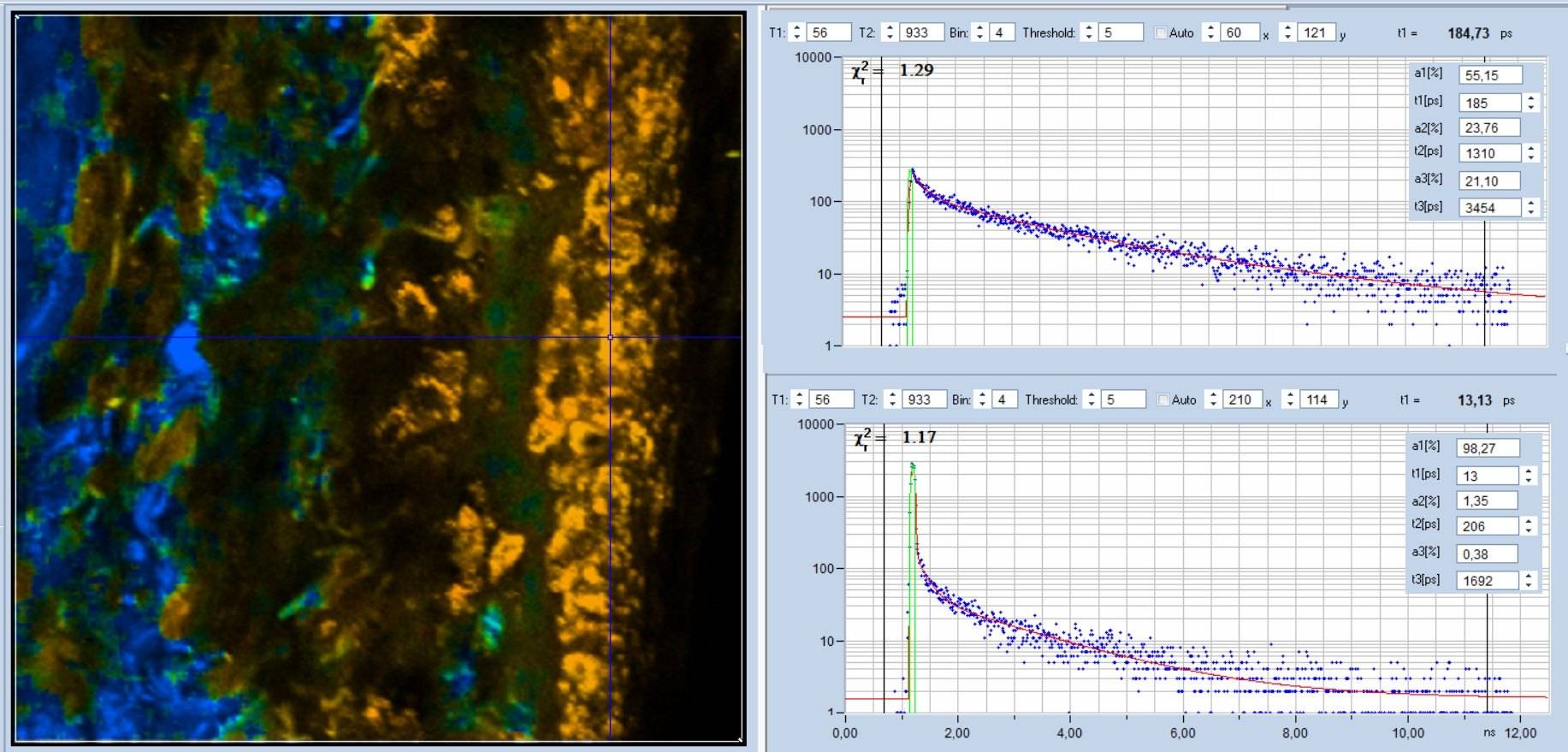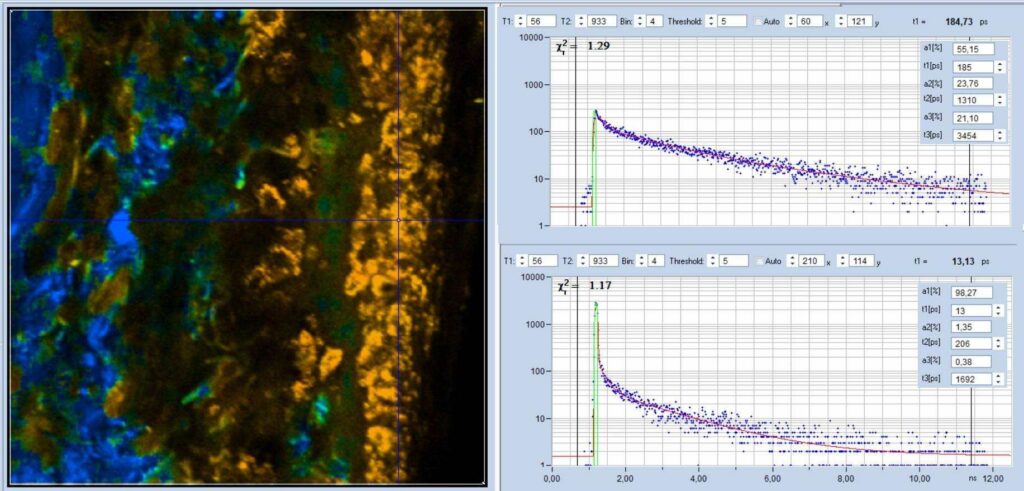Using a bh multiphoton TCSPC-FLIM system with ultra-fast TCSPC and ultra-fast detectors, we found an extremely fast fluorescence-decay component in human malignant melanoma. The fast component had lifetimes, t1, from 10 ps to 20 ps, and amplitudes a1, as large as 98%. The lifetimes and amplitudes are in sharp contrast to the decay parameters in healthy tissue or in benign pigmented leasions: In the tissue outside the tumor we found t1 = 185 ps and a1 = 55%, in benign pigmented leasons the correponding values were t1 = 96 ps, and and a1 = 45%. The amplitude ratio, a1/(a2+a3), in the benign leason was found 70 times smaller than in the melanoma tissue. This means benign lesions and malgnant melanoma are discriminated at an extremely high level of confidence. We therefore believe ultra-fast TCSPC FLIM can be used to identify malignant melanoma, and to investigate their development and progression mechanisms. For details please see Application Note, Ultra-Fast Fluorescence Decay in Malignant Melanoma.


